Trilene Knot
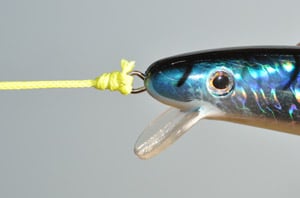
The Trilene Knot was developed by Berkley Fishing Tackle after extensive research and testing more than 40 years ago as a stronger alternative to the Clinch Knot, which had a tendency to slip and fail. Passing the tag end of the line twice through the eye of the swivel, snap, ring or lure eye, the Trilene Knot eliminates slippage and the double loop also makes the knot substantially more durable. The Trilene Knot usually tests at 95 percent or more of the unknotted line. It’s a proven knot for use with monofilament and fluorocarbon, and with Nylon and Dacron braids, but it is not an acceptable choice for gel-spun braided lines.
The Trilene Knot can be used with lines of up to 80-pound-test, such as when adding a lure or hook to the end of a heavy saltwater shock leader, but because the line is passed through the hook eye twice, the eye must be large enough to accept two turns of the line. Hooks with small eyes may be limited to 20-pound-test line or less. With lines of 30-pound or less, five or six wraps are required for maximum knot strength, but heavier lines need only three wraps.
When drawing the knot tight, it’s a good idea to pinch the small loops at the hook or lure eye between your thumb and forefinger so the loop won’t slip behind the eye. This will assure that both loops are in correct alignment for the strongest potential knot strength. With lines of 40-pound-test or more, use pliers or a reel handle to hold the hook so you can pull hard to seat the knot.
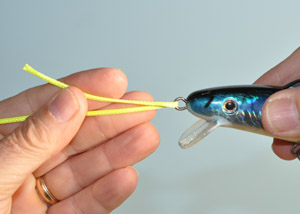
Step 1
Pass the tag end of the line through the hook or lure eye.
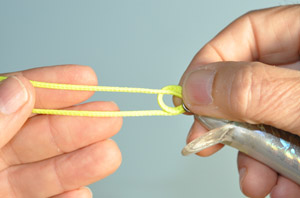
Step 2
Pass the tag end through the hook or lure eye a second time.
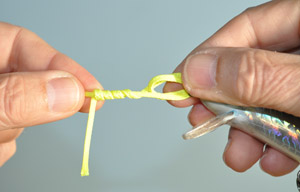
Step 3
Make five to six wraps around the line.
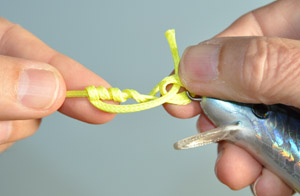
Step 4
Pass the tag end through the small double loop formed at the hook or lure eye.

Step 5
Lubrica
